Creating concept art in 3D

Ben Nicholas shared the secrets of his workflow and talked about sources of inspiration for vivid experiments with 3D.
Introduction
I started practicing 3D when I was 13 years old. My good childhood friend then indulged in 3D, and he inspired me to study it myself. At first I worked in Bryce, then quickly moved to 3ds Max and Maya. In high school, I was already doing 3D freelancing and doing odd jobs using the knowledge I gained. Most of all I was attracted to the hard surface-modeling, because I grew up next to the airplane and helicopter hangars, because my father was a pilot. He taught me to love science fiction. I think both of these aspects became the basis of my taste in art.
My 3D works from the time of high school:
')


After graduation, I entered the Portland Institute of Art and began studying graphics and design for games. I was lucky to study with very talented guys, such as Alex Dracott. I learned a lot and continued to work in parallel with freelancing, so as a result, I was able to perform small hacks for Apple, Nike and other companies. After graduation from the institute, projects for Nike turned into a full-time job for me at Adidas. There I was actively working on the design of concepts for basketball and running shoes, so I learned a lot about the basics of design and gained a love for concept creation. Before, I was just an artist, but this work taught me how to mix art and design. In many ways, this was my most important work from the point of view of evolution as an artist. After that, I worked a little on mobile games, for some time I participated in the creation of the Halo franchise, and now I'm working on Ubisoft in Montreal!
Work for Halo:


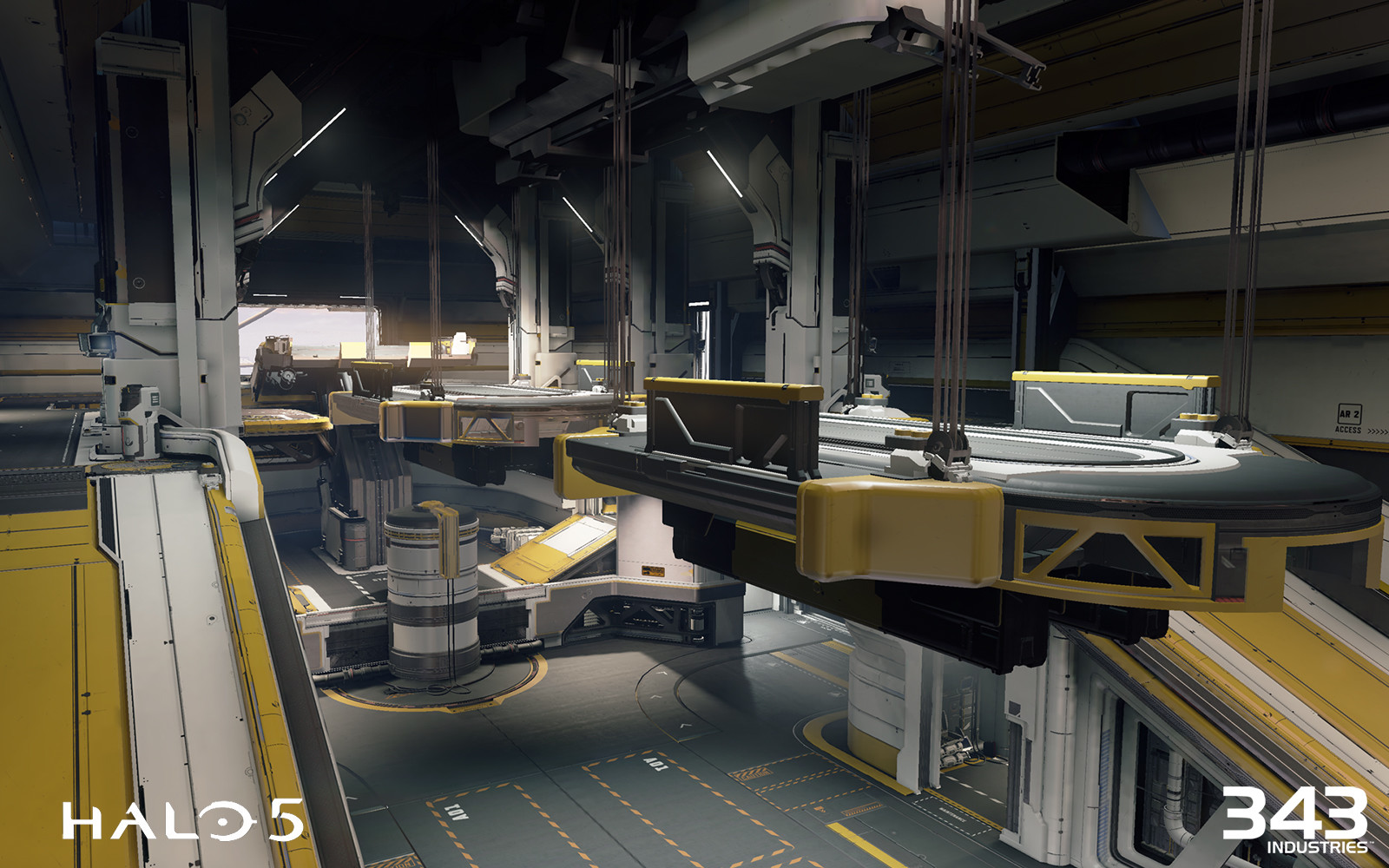
Concept art
It was very interesting for me to study minimalism, composition and chiaroscuro, so I decided to create works divided into the most basic parts. I found out that the most effective way to do this kind of work is to make small changes to the toon Keyshot shader, and on top of doing some work on Photoshop. This workflow was pretty fast and allowed me to create one image per night while I was working on this series. Due to the fact that I could create many works, I was able to quickly learn the lessons that I needed (for example, I studied which composition works and which does not, mastered the power of negative space , etc.). I configured the native toon Keyshot shader to give a much more contrast image and match it with the background color to create a sense of negative space. It's pretty simple, but it works.

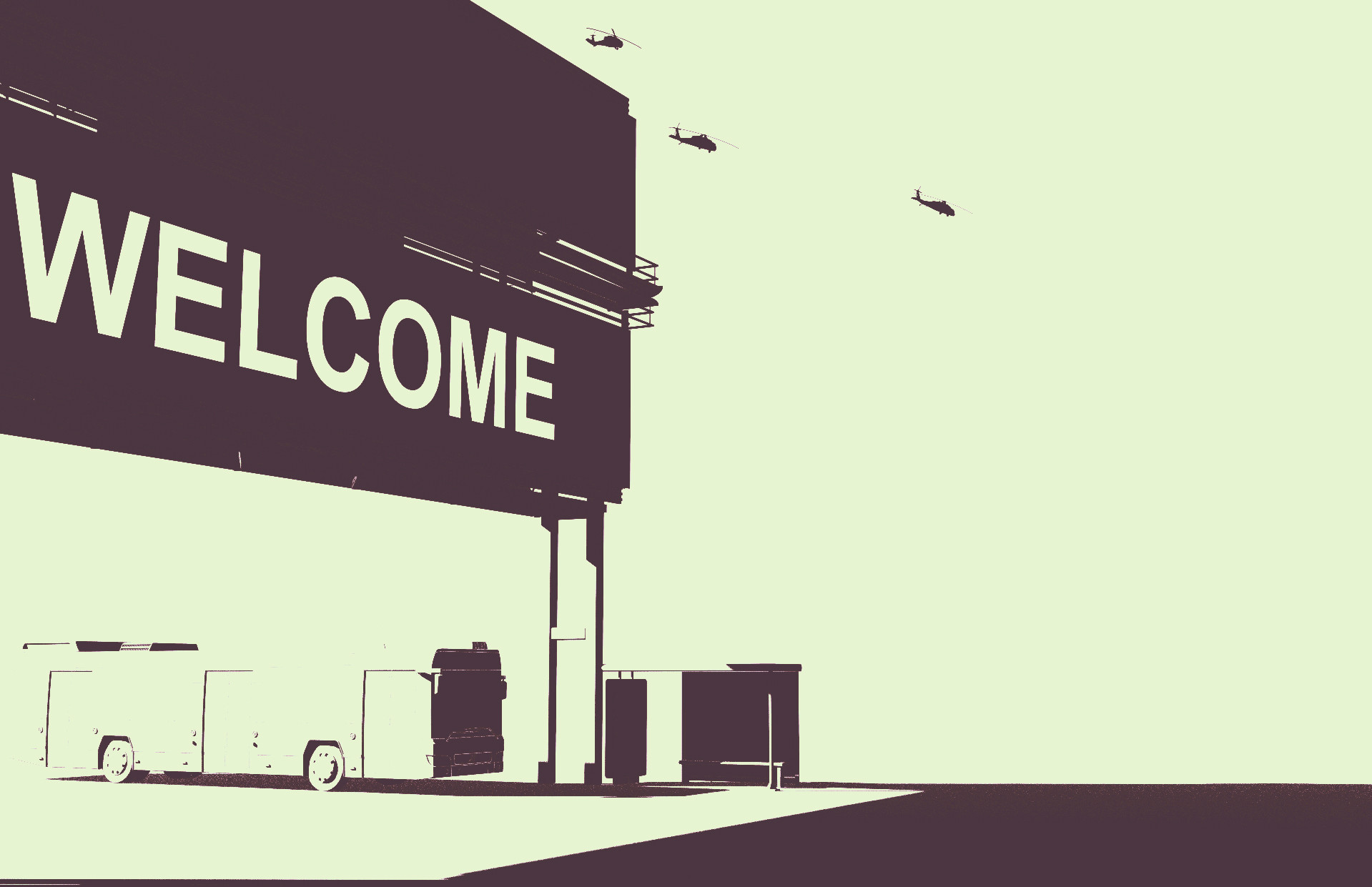
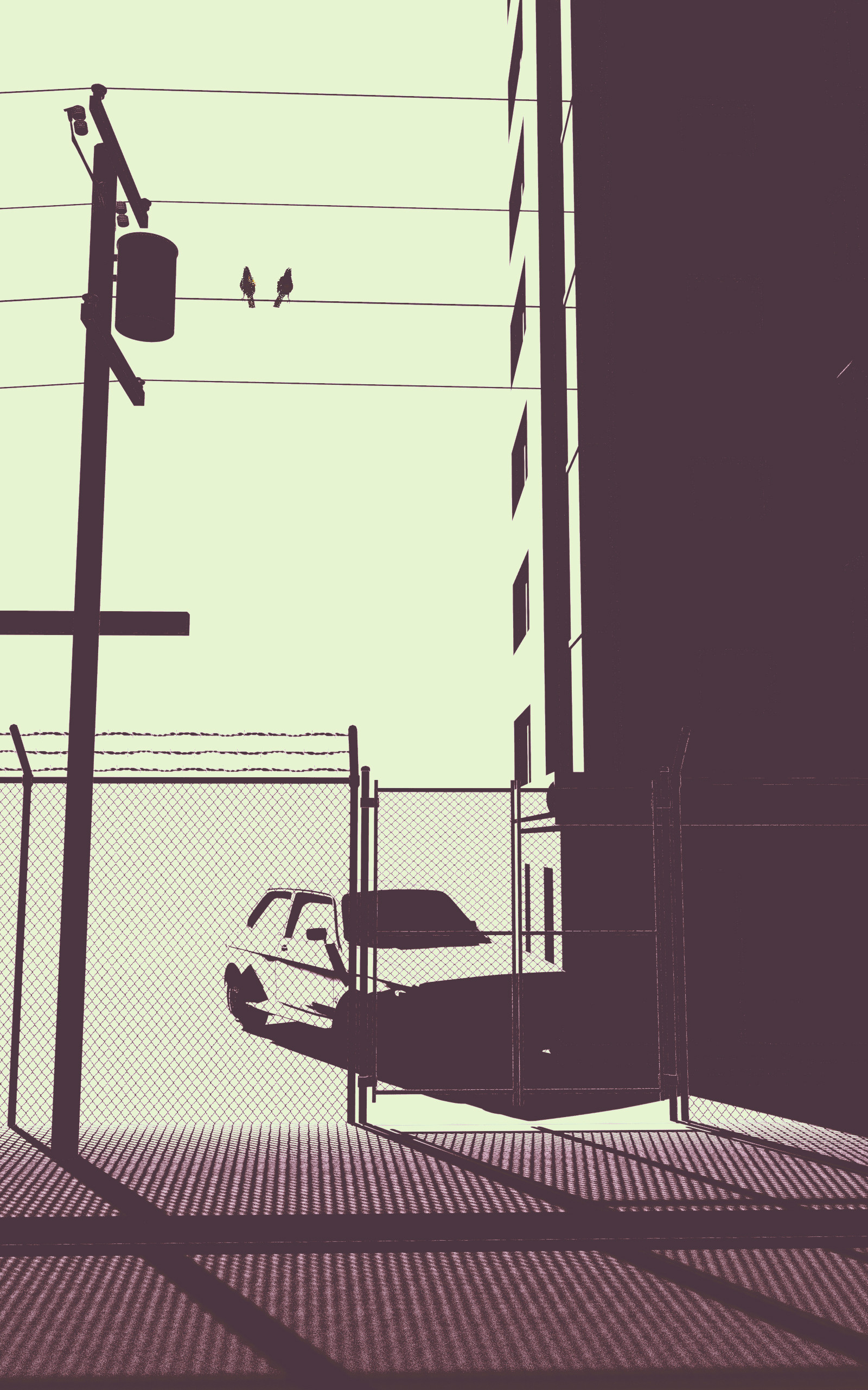
The working process
For a long time, I mainly used Max , but when I started working at Ubisoft, I switched to Blender . In my work there is a small group of amazing artists who showed me how powerful Blender is with the right plug-ins. Most of the time I use the Hard Ops plugin, which significantly increased the speed of modeling. It is thanks to him that I, working in the evenings, created a kitbash of 500 models in just two weeks.

Over the years my workflow has changed many times. Although I worked for some time in the position of environmental artist, in fact, I am an artist and concept designer, so most, if not all of my works now belong to 3D concepts. Therefore, any workflow I use should be fast, and there should be as few technical barriers as possible between the initial draft and the finished product. Sometimes this means that you need to use Keyshot when it comes to an individual object, a vehicle, or if I need to use a certain style with “cartoon” shading. New versions of Keyshot have a very handy material editor. It has AO and Curvature spaces of the world, so I really don't have to bake anything. I simply use procedural and tile materials, overlaying them with each other using the masks of the space of the world.




Here are some examples of works that have been textured and rendered in Keyshot:



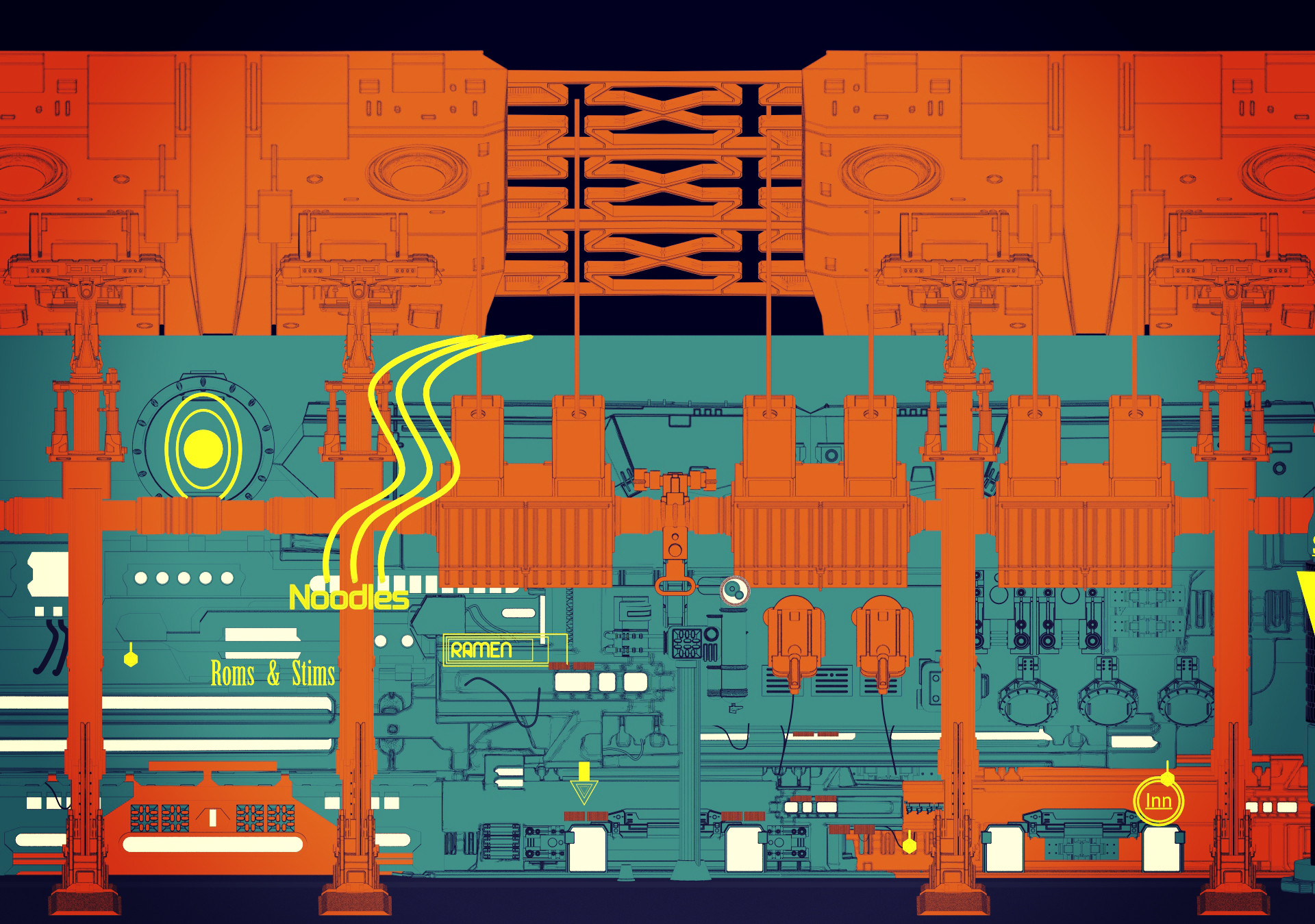
Today, my workflow looks like this: modeling in Blender, creating environments in Houdini and rendering with Redshift. I started using Houdini because it is very easy and fast to generate special effects and relief. The integration of Redshift with Houdini is also quite hassle-free: it allows you to use fast GPU rendering and just create materials. As in Keyshot, it has AO and curvature nodes, but it also has a triplanar texture node, which allows me to quickly texture and apply materials to my work without UV scans.
Here are some of the examples of work in Houdini / Redshift:

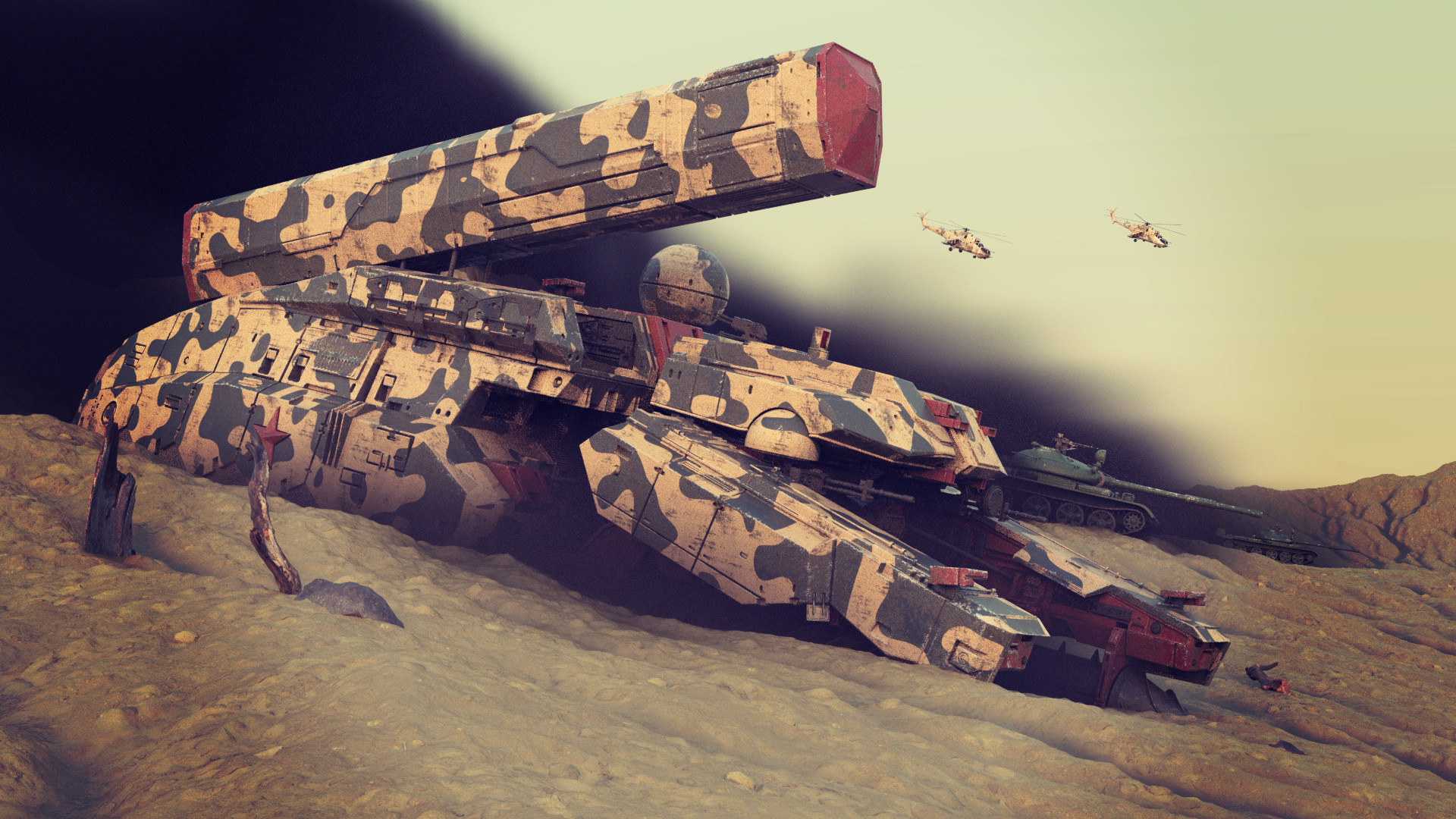


Colors
I took a lot of this from my experience with Adidas. I performed many passes of colors and patterns for shoes and equipment, so I admire experiments of this kind. It is annoying to me that so much gray and brown are used in science fiction, so the color has become very important to me. I am greatly inspired by the work of Möbius (Jean Giraud), Chris Foss (Chris Foss) and many other science fiction artists of the 70s.


As for color, at the very beginning of work on the concept I take a bunch of references, and I use some of them only for color. Then I choose colors from them and use these colors in my textures or use them as a color fill in the toon shader. When choosing color palettes, I use the excellent Kuler plug-in for Photoshop, which allows you to generate monochrome, complementary and other color schemes. Another useful tool is pictalucous , which allows you to upload an image and then break it into a color palette. It is incredibly convenient and easy to use. There are other sites that perform a similar function.

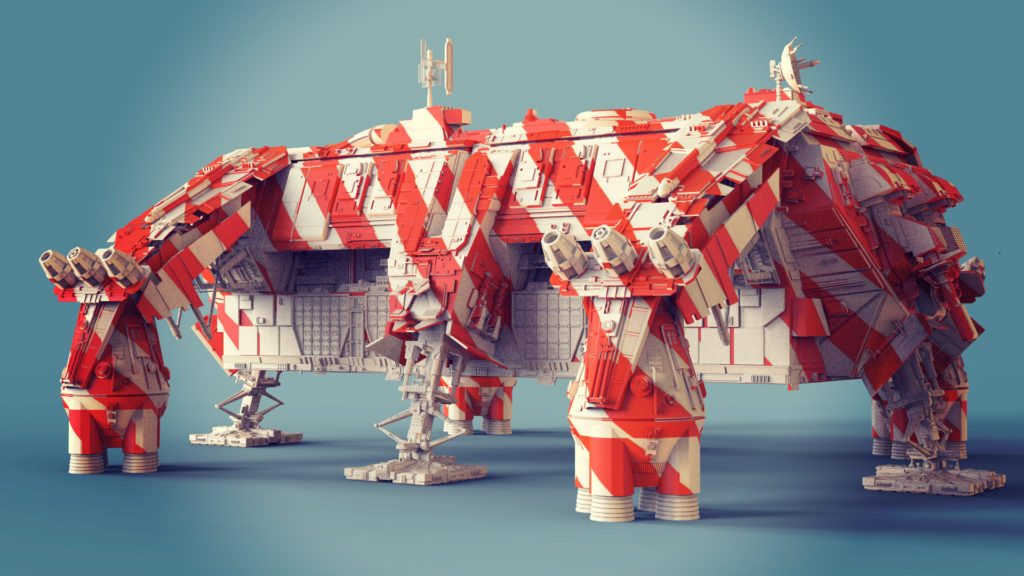
When working with patterns, I do a lot in Illustrator, using royalty-free libraries, sources in the public domain, etc. As in my kitbash library, I store folders with patterns that can be used as textures or as a source of inspiration for the form language in modeling.
Examples of some colors and patterns:


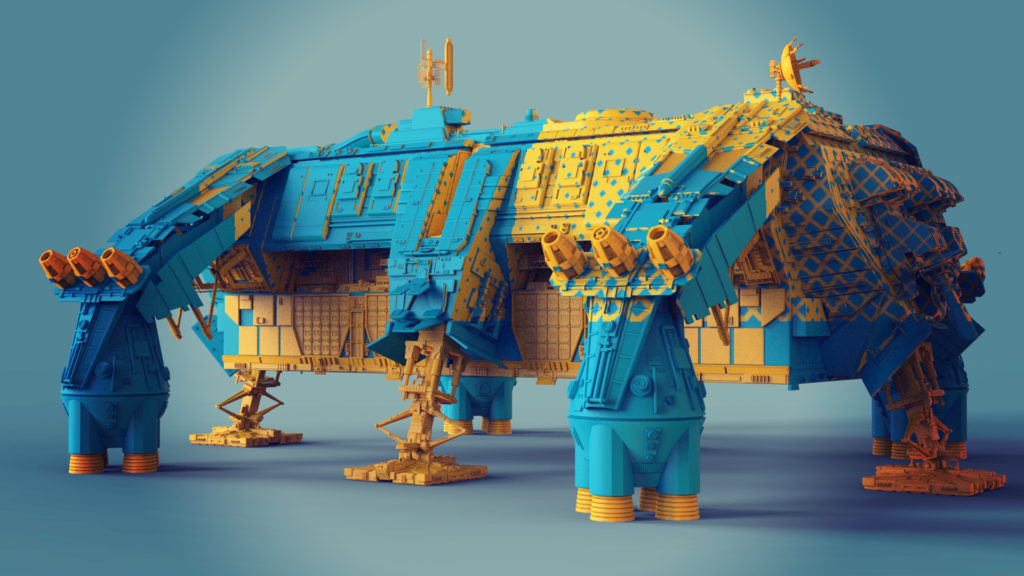
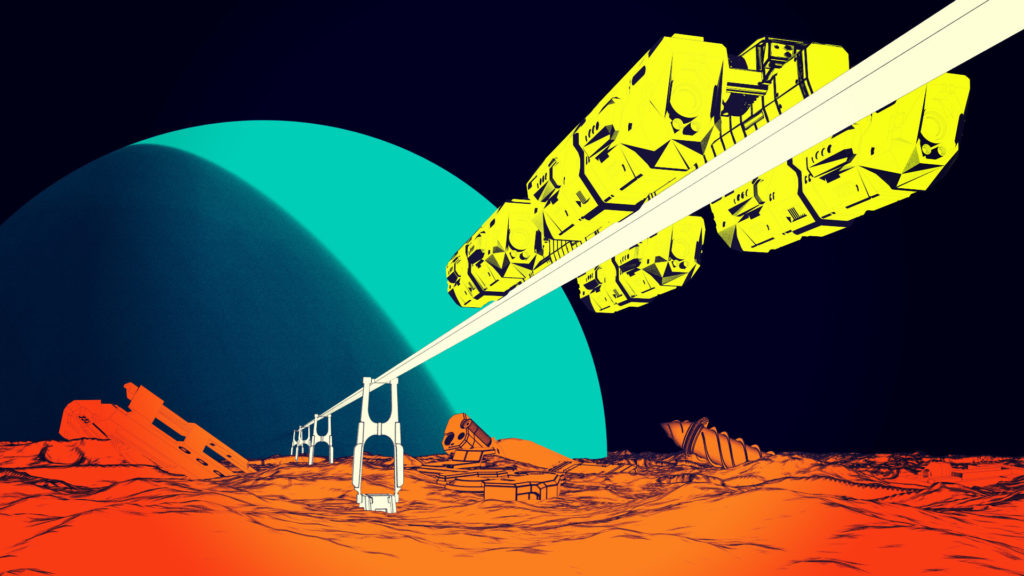
Lighting
To set the basic mood of the scene, I use HDRIs that do the hard work for me, and recently started using the Sun / Sky rig from Redshift. I’m not afraid to make lighting unrealistic if it serves an ultimate goal. Then I add small point sources of light on man-made objects to set the scale to highlight the key objects in the scene. This is all pretty logical from the point of view of common sense. For a while I was pretty obsessed with volume effects, such as fog, adding weight to the scene and exaggerating all the objects.

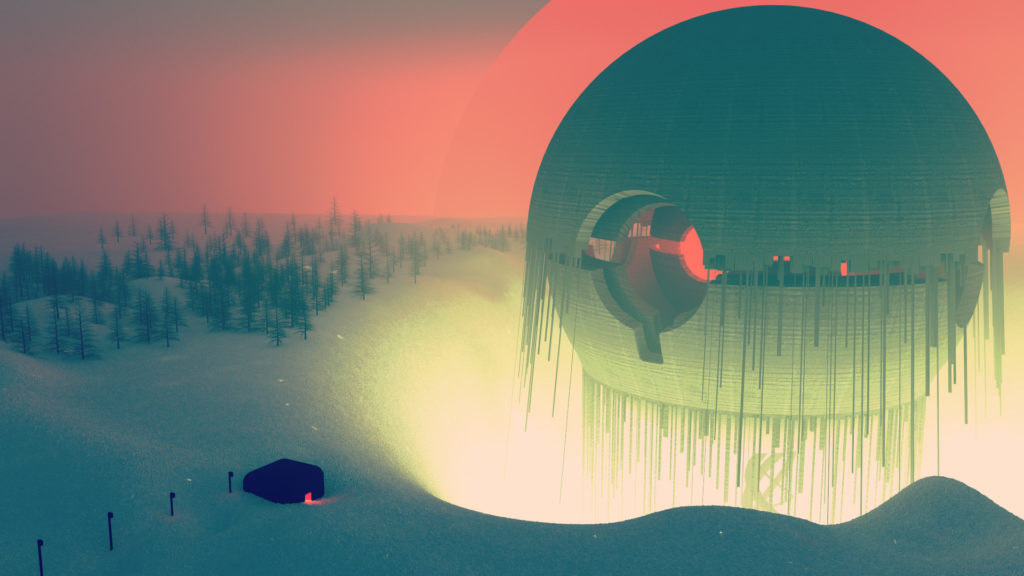

Why do you think artists rarely work with these interesting rendering effects?
I think mainly because of the expectations and the status quo. For a long time, the main goal of this industry was realism, so the guys continue to work in the same style. To get a job, you need to make great efforts to realistic graphics, so people tend to avoid more insane techniques. In addition, many artists draw inspiration from other artists of games and concepts, so the process moves in a circle. When everything is taken from one source, many fresh ideas cannot appear. I also think that it may be scary for an artist to make strange looking graphics for the first time. I will say for myself - I know that if we create a ship with insane detailing, it will get more popularity than something exotic. Previously, it confused me, it happens now, but in fact the most important thing is to be honest with yourself as an artist.

What you need to do and what style defines you? I think it is first of all important to create something that you love, even if it is a very strange or unusual art. Work on your favorite theme helps to escape from burnout and continue to love their work. Forcing yourself to do what you don’t like is a quick way to destroy your soul. Someone's strange art seems to me much more interesting than the same mechanisms over and over again. I don’t want to say that this kind of graphics is bad, it just sometimes creates a feeling of endless repetition of one theme. In addition, after reviewing a lot of portfolios, I can say that it is usually always noticeable when a person forces himself to create graphics that he does not like. Such works shine much less than the themes for which the artist has a real passion. In short, do not be afraid! Try strange and go for artistic risk! This moves our environment forward and is therefore incredibly important.
Ben Nicholas , artist and concept designer.
The interview was taken by Kirill Tokarev .
Source: https://habr.com/ru/post/342172/
All Articles